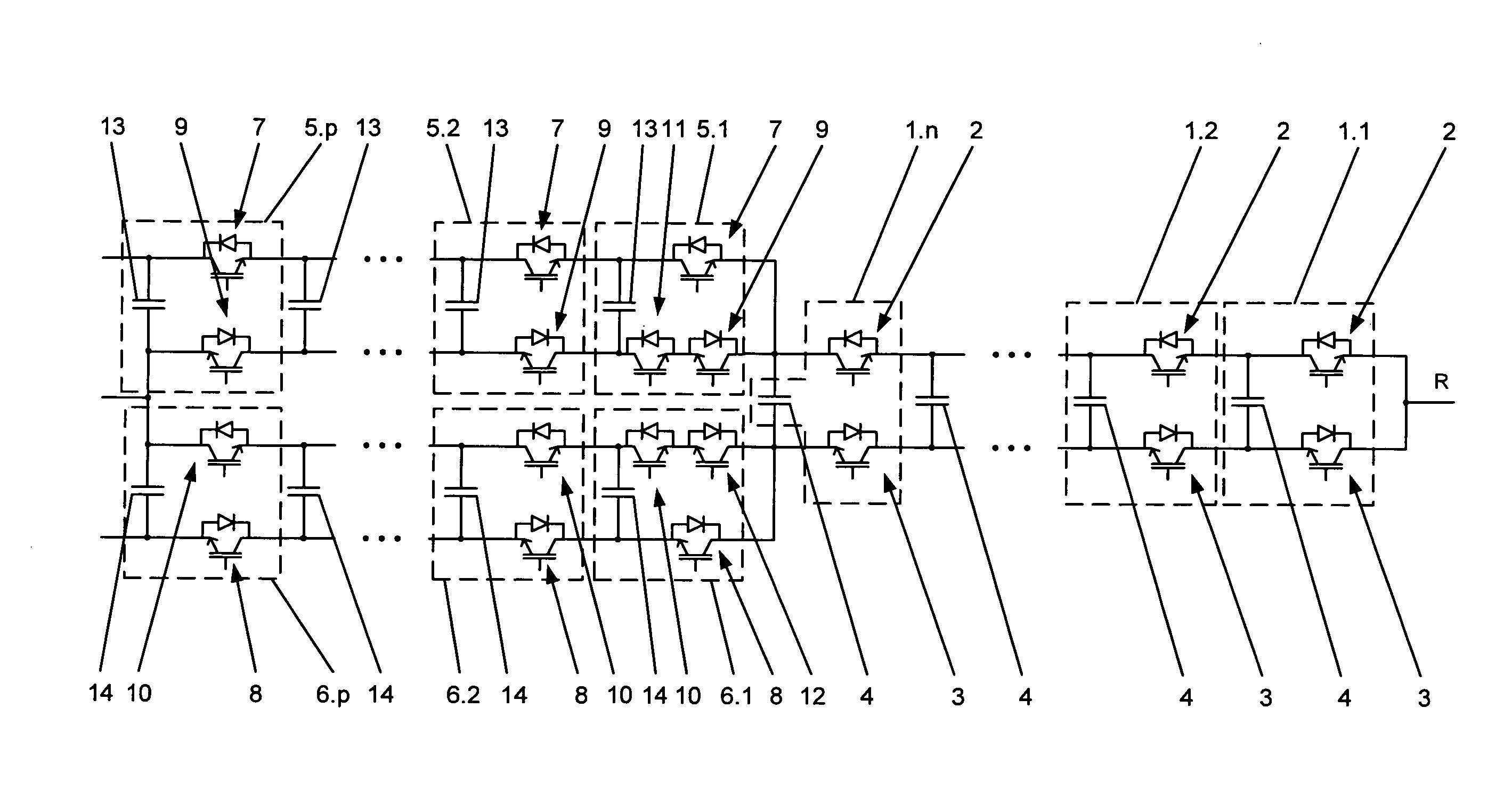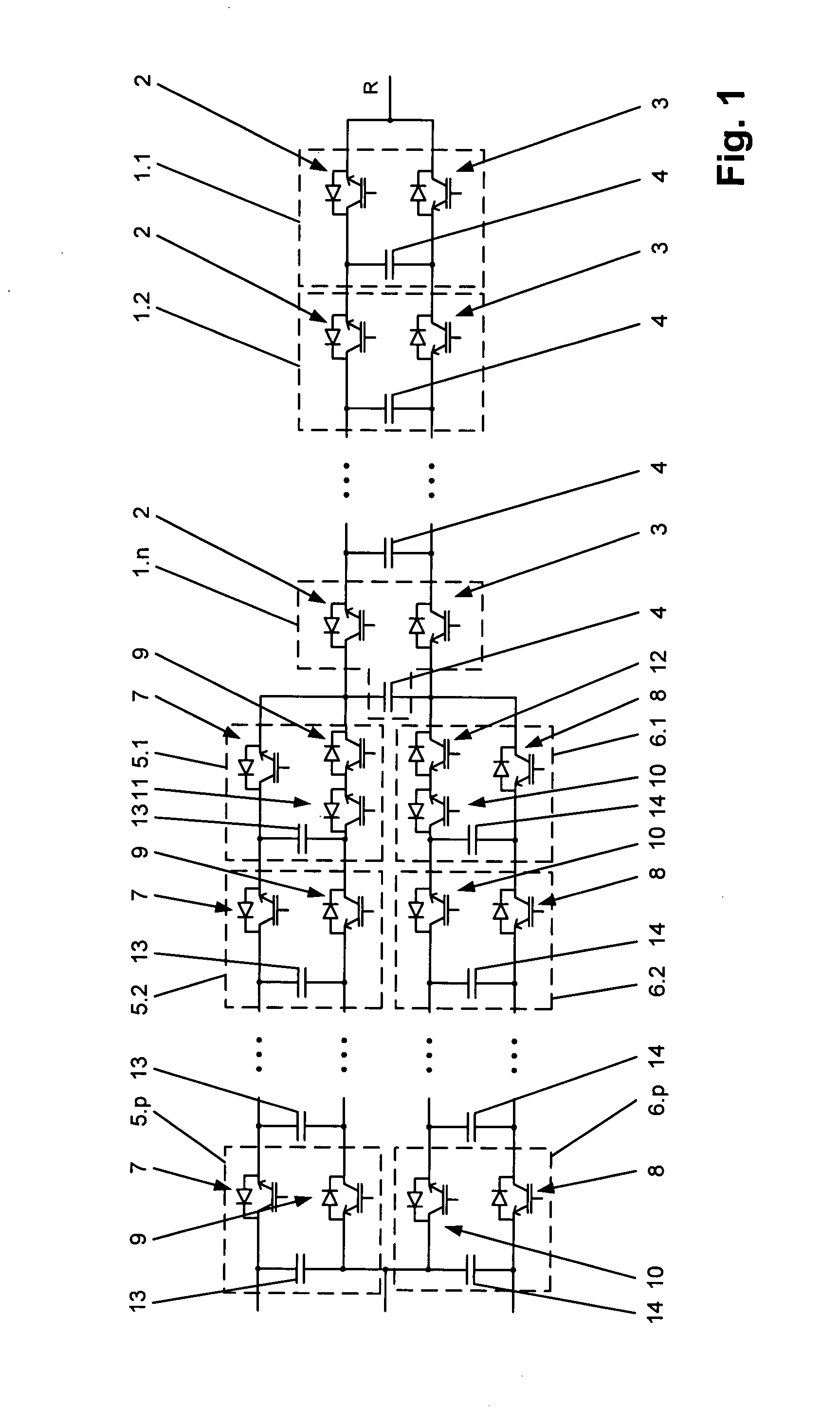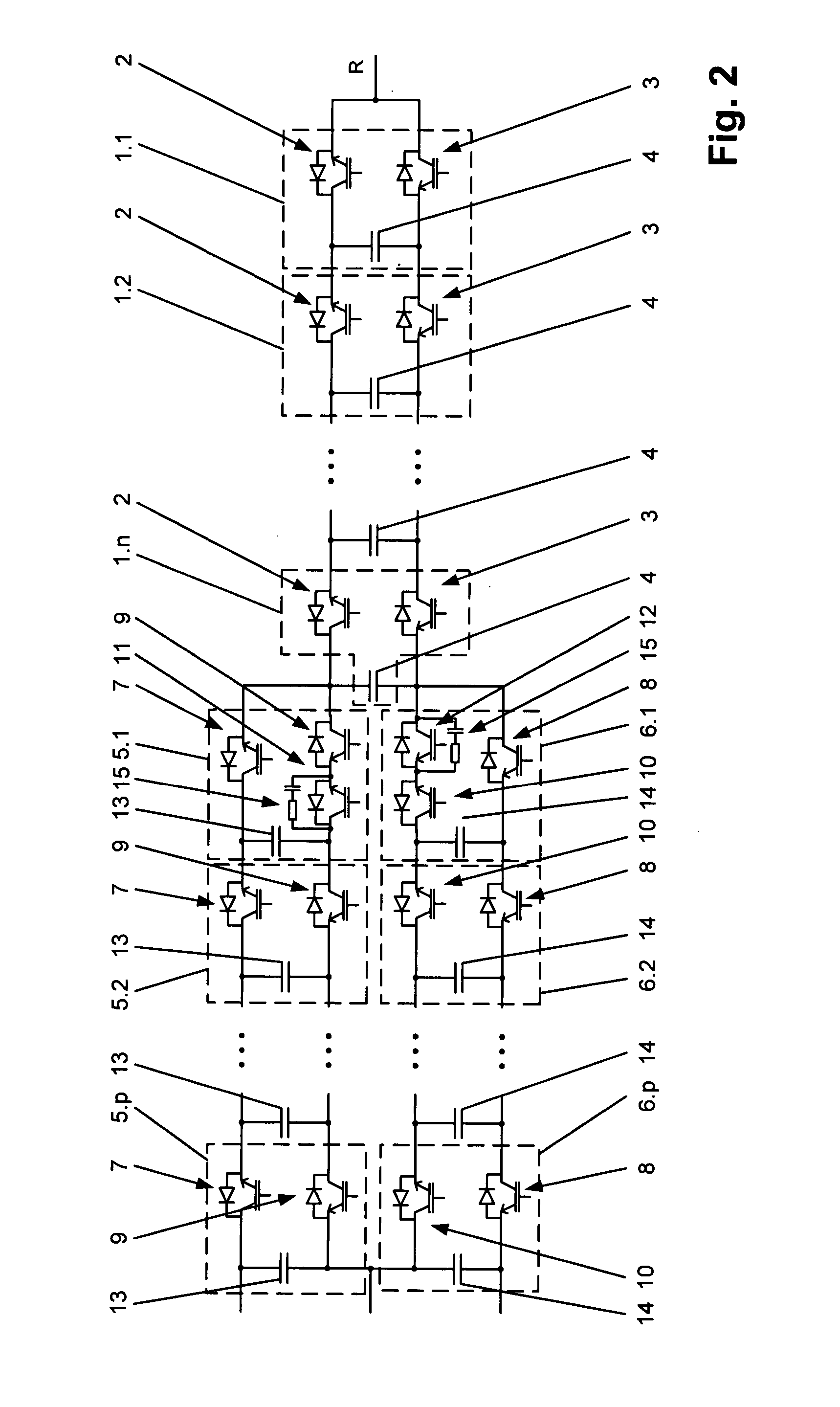Converter circuit for switching of a multiplicity of switching voltage levels
- Summary
- Abstract
- Description
- Claims
- Application Information
AI Technical Summary
Benefits of technology
Problems solved by technology
Method used
Image
Examples
first embodiment
[0010]FIG. 1 shows a converter circuit according to the invention,
second embodiment
[0011]FIG. 2 shows a converter circuit according to the invention, and
third embodiment
[0012]FIG. 3 shows a converter circuit according to the invention.
[0013] The reference symbols used in the drawings and their meanings are listed in summarized form in the list of reference symbols. In principle, identical parts are provided with the same reference symbols in the figures. The described embodiments represent examples of the subject matter of the invention, and have no restrictive effect.
Approaches to Implementation of the Invention
[0014]FIG. 1 shows one embodiment, in particular a single-phase embodiment, of a converter circuit according to the invention for switching of a multiplicity of switching voltage levels. In this case, the converter circuit has n first switching groups 1.1, . . . , 1.n which are provided for each phase R, Y, B, with the n-th first switching group 1.n being formed by a first drivable bidirectional power semiconductor switch 2 and a second drivable bidirectional power semiconductor switch 3, and with the first first switching group 1.1 to t...
PUM
 Login to View More
Login to View More Abstract
Description
Claims
Application Information
 Login to View More
Login to View More - R&D
- Intellectual Property
- Life Sciences
- Materials
- Tech Scout
- Unparalleled Data Quality
- Higher Quality Content
- 60% Fewer Hallucinations
Browse by: Latest US Patents, China's latest patents, Technical Efficacy Thesaurus, Application Domain, Technology Topic, Popular Technical Reports.
© 2025 PatSnap. All rights reserved.Legal|Privacy policy|Modern Slavery Act Transparency Statement|Sitemap|About US| Contact US: help@patsnap.com



